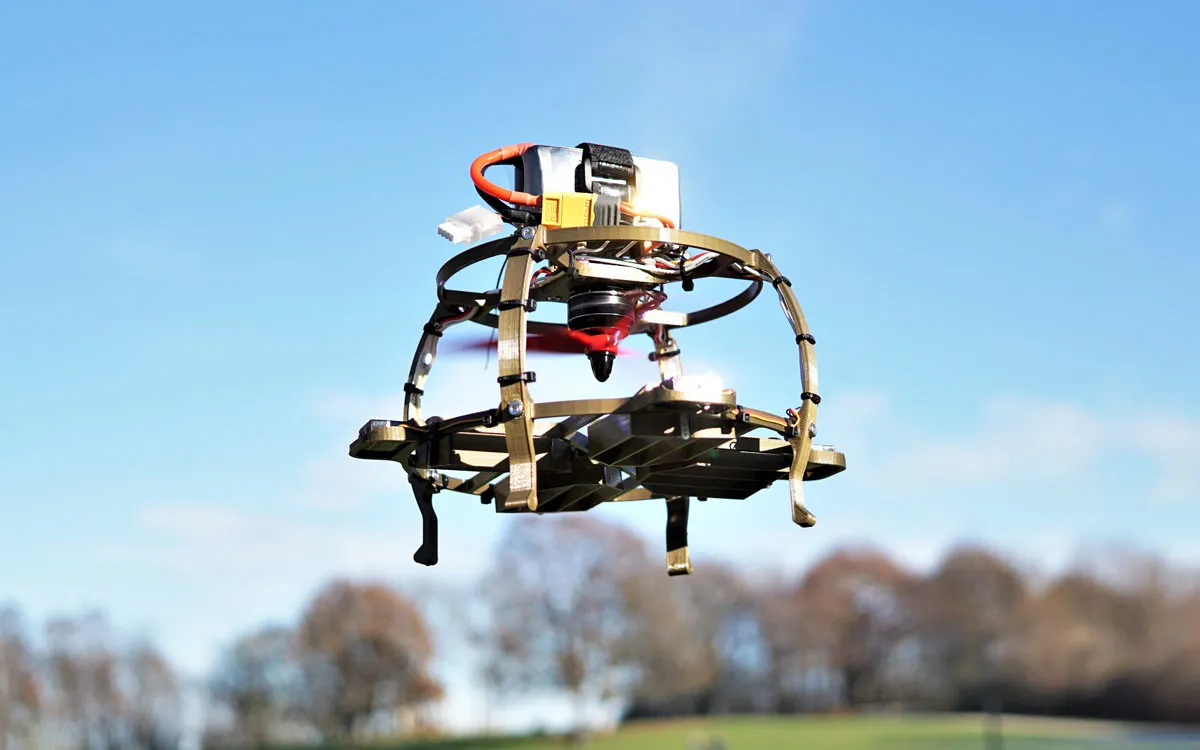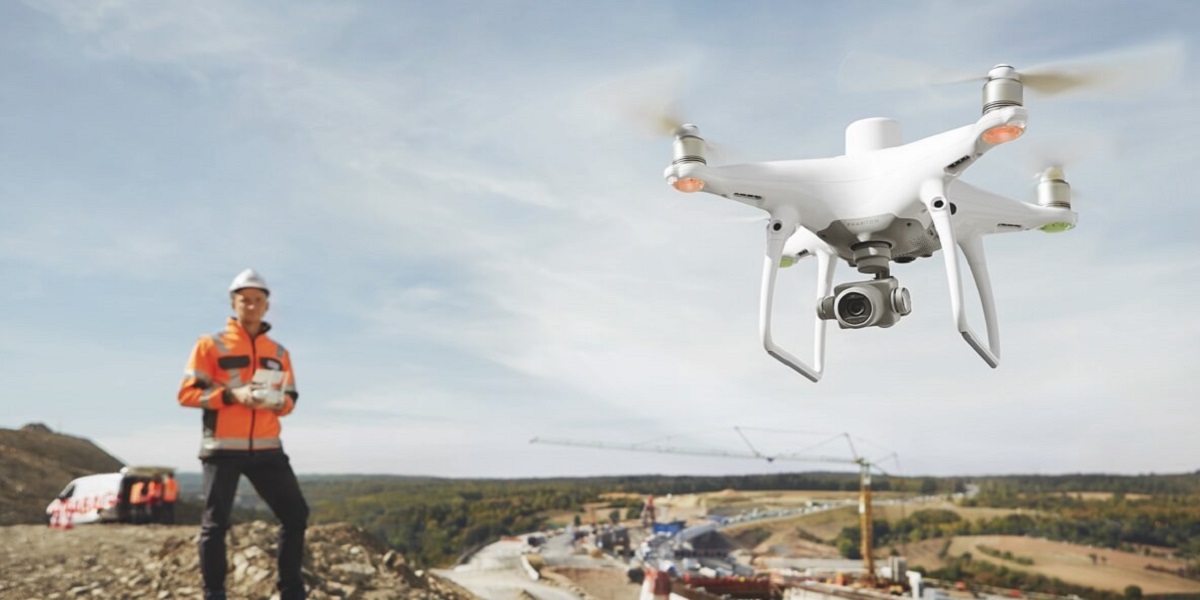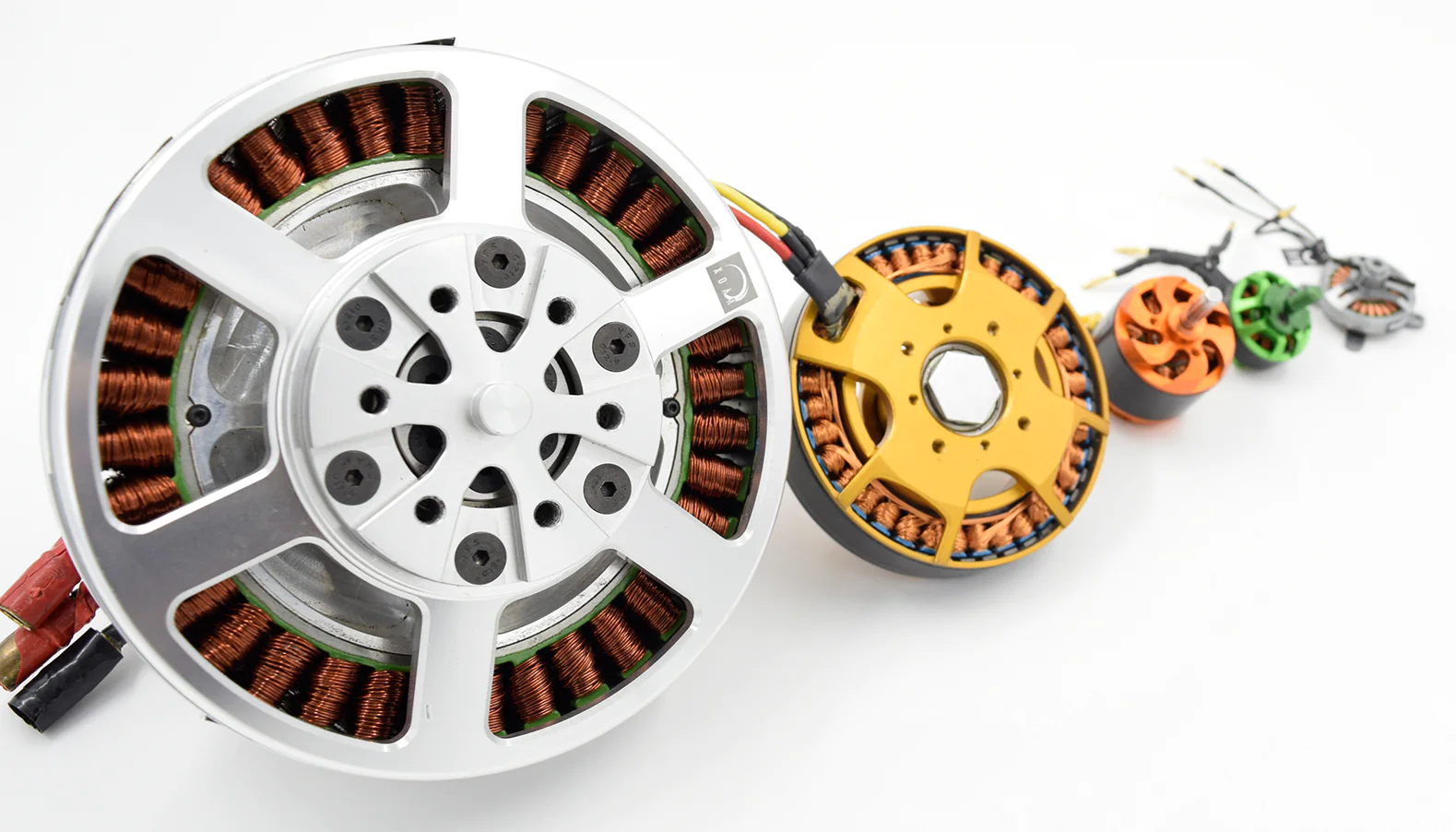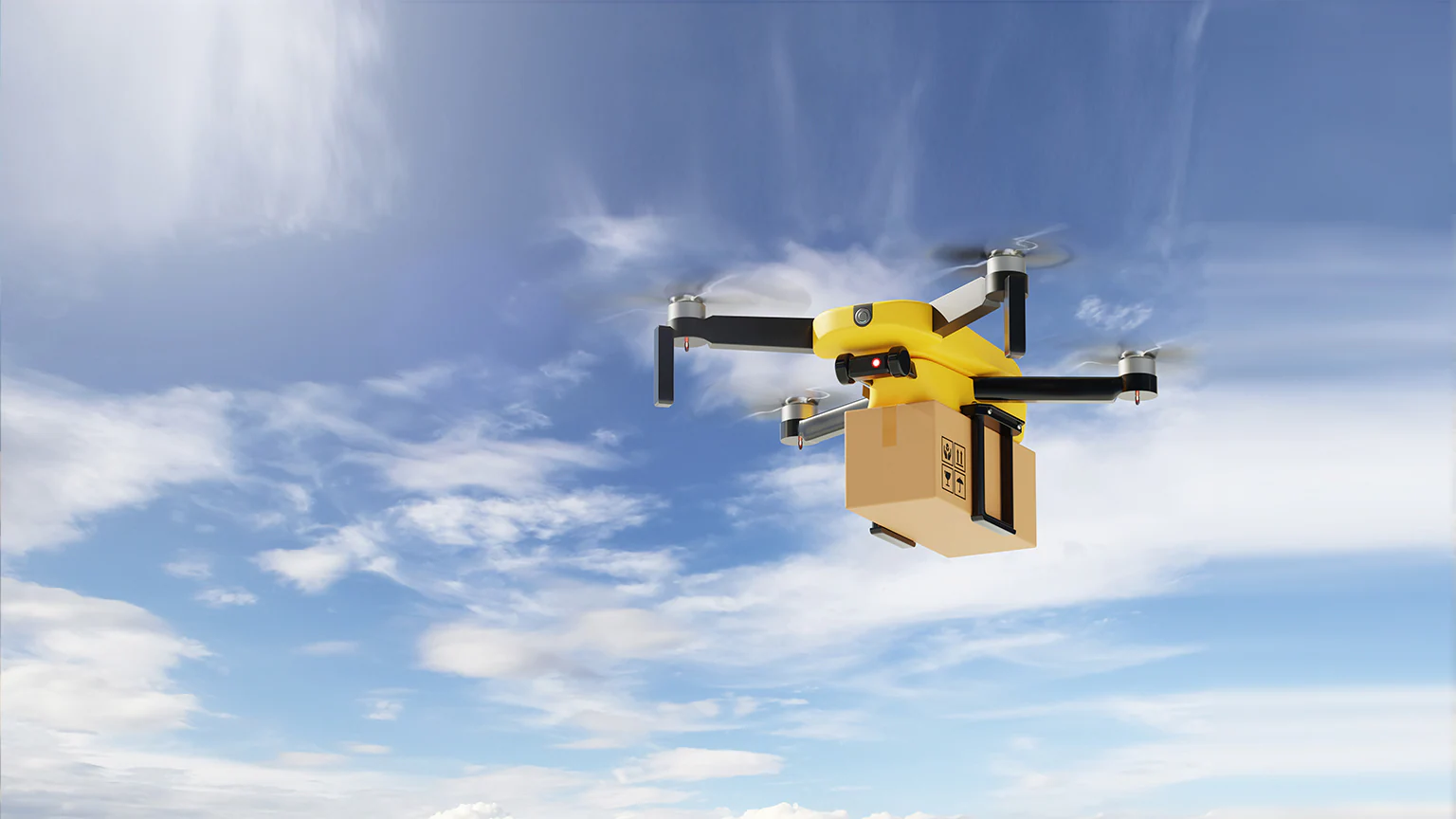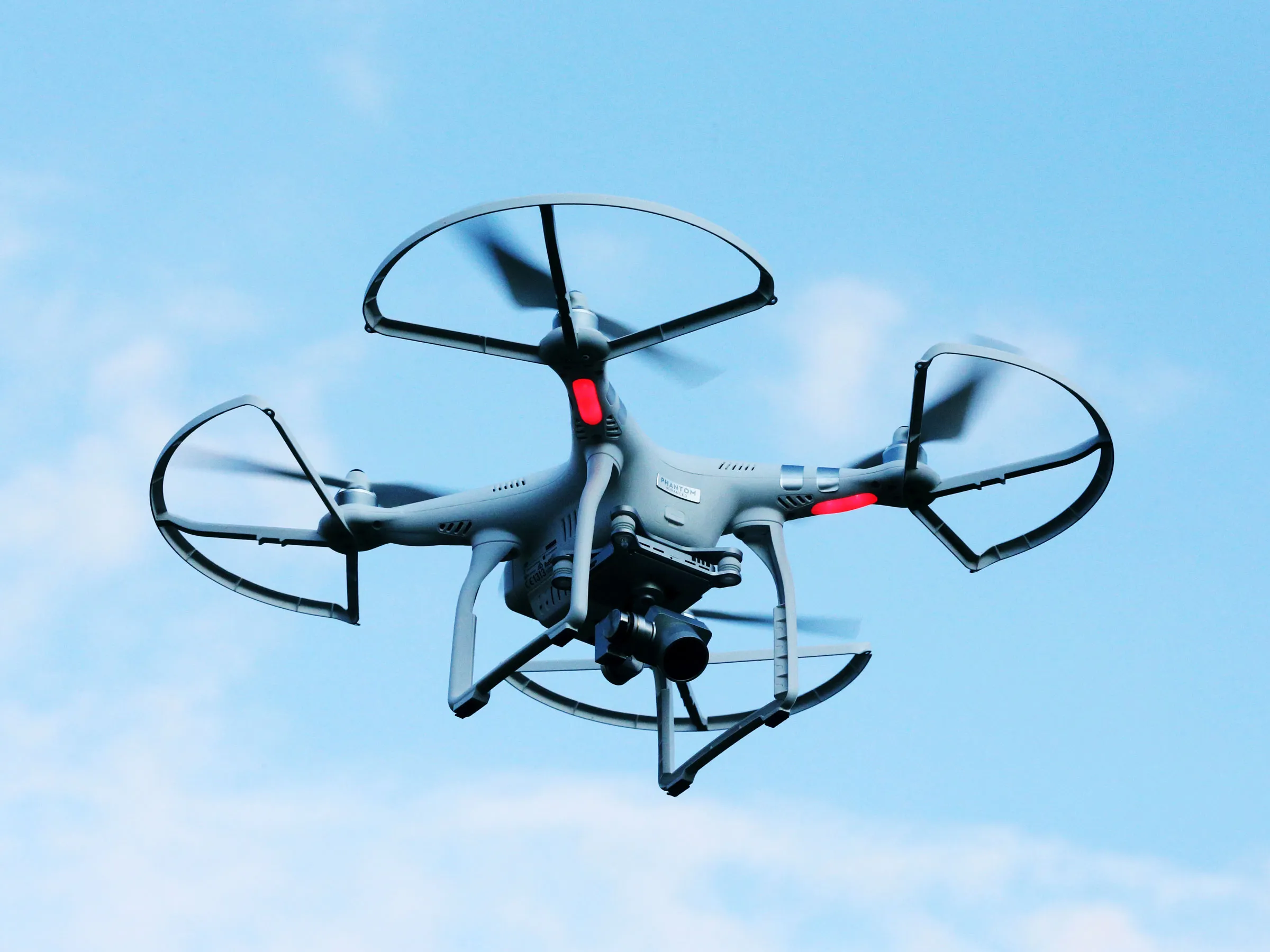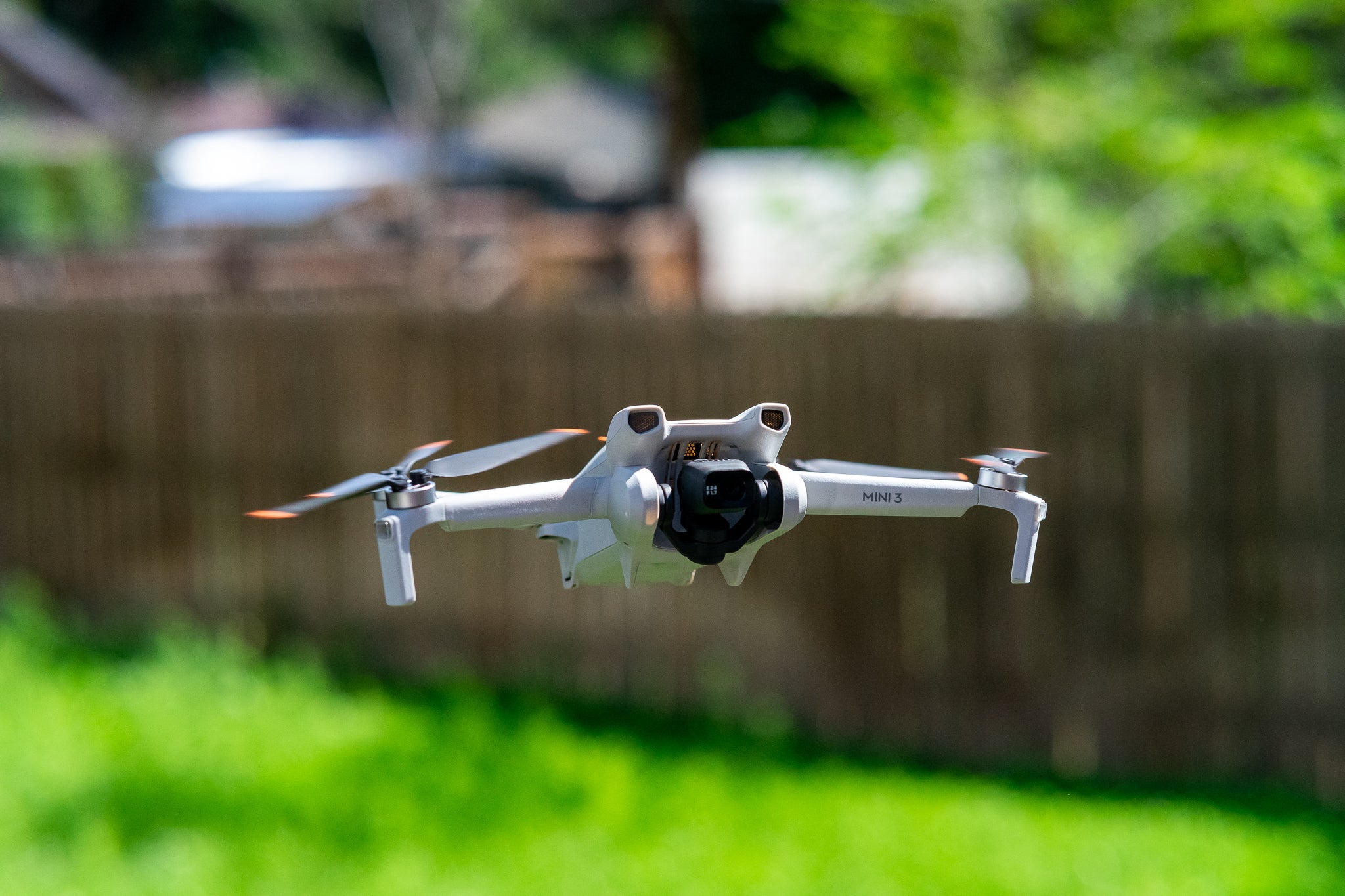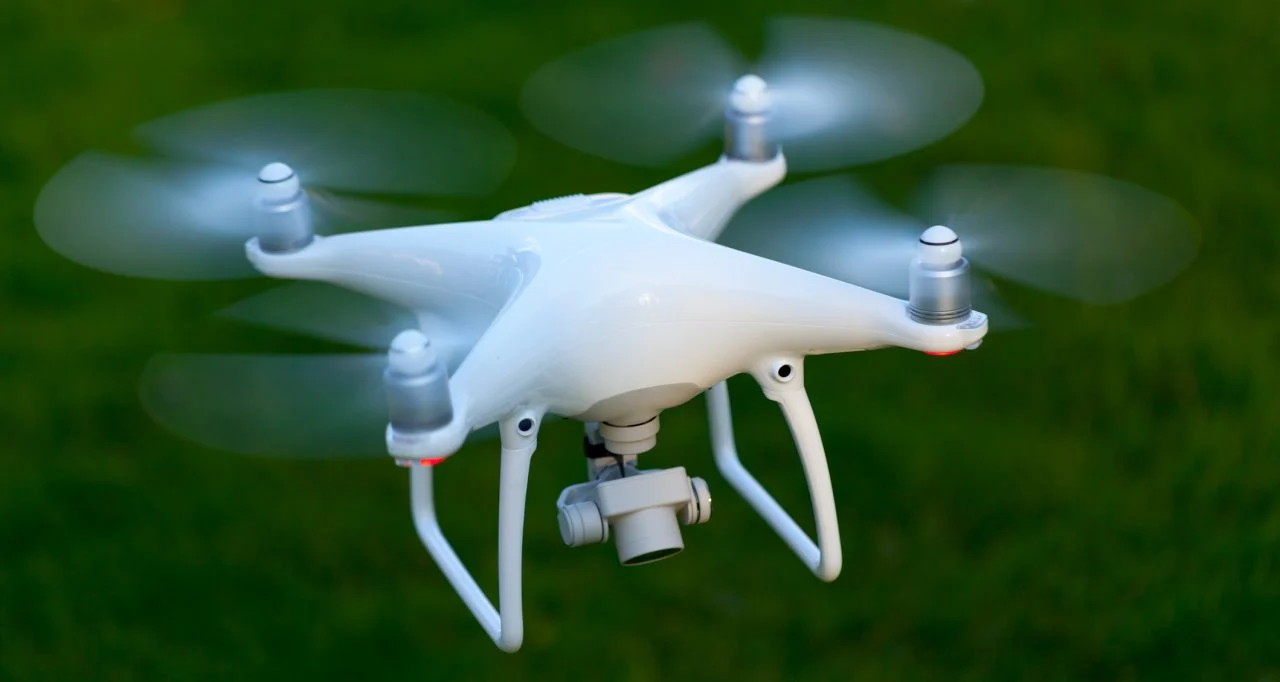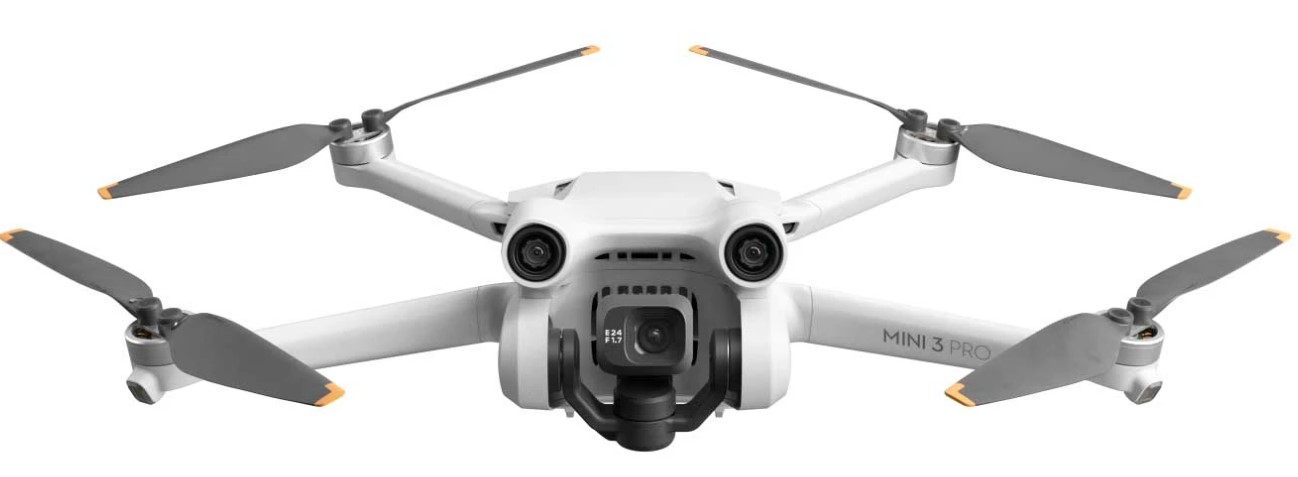Introduction
Welcome to the world of drones! These incredible flying machines have revolutionized various industries, from aerial photography and videography to package delivery and search and rescue operations. With their ability to hover in the air and capture breathtaking footage from unique perspectives, drones have become a popular tool for enthusiasts and professionals alike.
One type of drone that stands out among the rest is the single rotor drone. Unlike the commonly known multi-rotor drones, which feature multiple propellers for stability and maneuverability, single rotor drones operate with just one central rotor. This unique design offers its own set of advantages and challenges, making it an interesting choice for drone enthusiasts and professionals.
In this article, we will delve into the world of single rotor drones, exploring their definition, functioning, advantages, drawbacks, different types, and various applications. Whether you are a beginner looking to learn about drones or an experienced pilot wanting to explore new possibilities, this article will provide you with valuable insights into the fascinating world of single rotor drones.
But first, let’s get a clear understanding of what exactly a single rotor drone is and how it differs from other drones on the market.
Definition of a Single Rotor Drone
A single rotor drone, also known as a traditional helicopter or a coaxial drone, is a type of unmanned aerial vehicle (UAV) that features a single main rotor. Unlike multi-rotor drones, which have multiple propellers mounted on arms, single rotor drones rely on a large rotor mounted on top and, in some designs, a smaller tail rotor for stability and control.
The single rotor design dates back to the early days of aviation and is similar to the configuration used in manned helicopters. However, single rotor drones are typically smaller and lighter, making them more agile and maneuverable in tight spaces.
The main rotor of a single rotor drone creates both lift and thrust, allowing the aircraft to climb, descend, hover, and move in any desired direction. The tail rotor, on the other hand, is used to counteract the torque produced by the main rotor’s rotation and provide stability. This configuration enables single rotor drones to perform precise aerial maneuvers and achieve higher speeds compared to their multi-rotor counterparts.
It is important to note that single rotor drones can have different variants, including conventional single rotor drones and coaxial drones. Conventional single rotor drones feature a main rotor and a separate tail rotor, while coaxial drones eliminate the need for a tail rotor by using two sets of counter-rotating main rotors, one above the other.
These variants may have slightly different flight characteristics and performance capabilities. However, they all fall under the umbrella of single rotor drones due to their shared reliance on a single main rotor for lift and thrust.
Now that we have a clear understanding of what defines a single rotor drone, let’s explore how these fascinating machines work and what advantages they offer.
How Does a Single Rotor Drone Work?
Understanding how a single rotor drone works requires knowledge of its key components and their functions. The primary components of a single rotor drone include the main rotor, tail rotor (in conventional designs), flight control system, and power source.
The main rotor, as mentioned earlier, is responsible for generating lift and thrust. It consists of several blades that rotate rapidly, creating an upward force that allows the drone to take off and remain airborne. The angle of the rotor blades can be adjusted by the flight control system, enabling the drone to move in various directions.
To counteract the torque generated by the main rotor’s rotation, conventional single rotor drones incorporate a tail rotor. The tail rotor produces a sideways force, known as anti-torque, which helps maintain the drone’s stability and prevents it from spinning uncontrollably. In coaxial drones, this anti-torque force is achieved through the counter-rotation of the two main rotor sets, eliminating the need for a tail rotor.
The flight control system plays a vital role in single rotor drones, allowing the pilot to control the aircraft’s movement. It consists of various sensors, such as gyroscopes and accelerometers, which provide feedback on the drone’s orientation, speed, and position. This information is then processed by the flight control system, which adjusts the angle and speed of the rotor blades to achieve the desired flight maneuvers.
Powering the single rotor drone is typically a battery or a combination of batteries, providing electrical energy to the motors that drive the main and tail rotors. The power source needs to be carefully chosen to ensure sufficient flight time and optimal performance.
When it comes to controlling a single rotor drone, pilots use a remote controller or a mobile device connected to the drone’s onboard flight control system. These control systems allow pilots to adjust throttle, pitch, roll, and yaw, giving them full control over the drone’s movement and orientation in three-dimensional space.
By manipulating the rotor blades’ angles and varying the speed of rotation, single rotor drones can perform a wide range of flight maneuvers, including vertical takeoff and landing, hovering, forward/backward movement, side-to-side movement, and even aerial acrobatics.
Now that we have explored the inner workings of a single rotor drone, let’s delve into the advantages they offer over other drone types.
Advantages of Single Rotor Drones
Single rotor drones offer several advantages that make them an attractive choice for certain applications and operators. Let’s take a look at some key advantages of single rotor drones:
1. Longer Endurance: Single rotor drones, especially those powered by gasoline or other fuel sources, generally have longer flight times compared to battery-powered multi-rotor drones. This extended endurance makes them suitable for tasks that require longer missions or aerial surveillance.
2. Higher Payload Capacity: Due to their larger size and stronger power systems, single rotor drones are capable of carrying heavier payloads. This makes them ideal for applications such as aerial photography and videography that require high-quality cameras and equipment.
3. Greater Stability: Single rotor drones, particularly coaxial designs with two main rotors, offer enhanced stability and control. The counter-rotating rotors cancel out the torque, providing a more stable flight experience, even in challenging weather conditions.
4. Improved Wind Resistance: Single rotor drones are generally more resistant to strong winds due to their efficient aerodynamic design. This allows them to maintain stability and control while flying in gusty conditions, making them viable for outdoor operations in diverse environments.
5. Enhanced Speed: Single rotor drones can achieve higher speeds compared to multi-rotor drones. This makes them suitable for tasks that require rapid response or tracking moving targets, such as search and rescue missions or aerial surveillance of fast-moving subjects.
6. Longer Range: With their larger fuel tanks or more efficient power systems, single rotor drones can cover greater distances without the need for frequent refueling or recharging. This enables them to perform extended missions or survey large areas with minimal interruptions.
7. Customizability: Single rotor drones often offer more customization options compared to off-the-shelf multi-rotor drones. This allows operators to tailor the drone’s components, such as cameras, sensors, or communication systems, to meet specific mission requirements.
These advantages make single rotor drones a preferred choice for various applications, including aerial cinematography, surveying remote areas, agricultural monitoring, and even military operations. However, it’s important to note that single rotor drones also have some drawbacks to consider, which we will explore in the following section.
Disadvantages of Single Rotor Drones
While single rotor drones offer several advantages, they also come with some inherent disadvantages that should be taken into consideration. Let’s explore some of the key disadvantages of single rotor drones:
1. Complexity: Single rotor drones are typically more complex in design compared to multi-rotor drones. The presence of a main rotor and tail rotor (in conventional designs) adds complexity to the mechanical and control systems. This complexity can lead to increased maintenance requirements and higher chances of component failure.
2. Higher Cost: Single rotor drones tend to be more expensive than their multi-rotor counterparts. Their larger size, sophisticated design, and specialized components contribute to higher manufacturing and operational costs. This can be a limiting factor for hobbyists or small-scale drone operators with budget constraints.
3. Noisier: Single rotor drones, especially those powered by combustion engines, tend to produce more noise compared to electric-powered multi-rotor drones. The sound generated by the rotating blades and the internal combustion engine can be a drawback in scenarios where low noise operation is desired, such as wildlife observation or surveillance missions.
4. Higher Skill Requirement: Flying a single rotor drone is generally more challenging and requires higher piloting skills compared to multi-rotor drones. The complex flight dynamics, including torque effects and the need to manage the collective pitch and cyclic controls, demand experience and training to operate the drone safely and efficiently.
5. Limited Maneuverability: While single rotor drones excel in certain flight characteristics, such as stability and endurance, they may have limitations in terms of maneuverability. Performing sharp turns or agile movements can be more challenging due to the inherent aerodynamic design and the physical limitations of the single main rotor.
6. Safety Concerns: The presence of a large spinning main rotor poses a higher risk of injury or damage in the event of a collision or contact with objects or people. The powerful rotor can cause significant harm if not handled properly, necessitating extra caution and adherence to safety protocols during operation.
Despite these disadvantages, single rotor drones continue to be utilized in various industries and applications, where their unique capabilities outweigh the drawbacks. Understanding these limitations equips operators to make informed decisions when selecting the appropriate drone for their specific needs.
Different Types of Single Rotor Drones
Single rotor drones come in different variants, each with its own unique features and characteristics. Let’s explore some of the different types of single rotor drones available in the market:
1. Conventional Single Rotor Drones: These drones feature a single main rotor and a separate tail rotor. The main rotor generates lift and thrust, while the tail rotor counters the torque produced by the main rotor’s rotation. Conventional single rotor drones are widely used in various industries, including aerial photography, videography, and industrial inspections.
2. Coaxial Single Rotor Drones: Coaxial drones eliminate the need for a tail rotor by using two sets of counter-rotating main rotors, one mounted above the other. The counter-rotation allows for better stability and control, making coaxial drones ideal for demanding tasks such as aerial mapping and surveying.
3. Compound Single Rotor Drones: Compound drones combine the benefits of a single main rotor with additional propulsion systems, such as fixed wings or ducted fans. This hybrid design allows for efficient horizontal flight while still benefitting from the vertical takeoff and landing capabilities of single rotor drones. Compound drones are popular in applications requiring long-range missions or high-speed operations.
4. Autogyros: While not technically single rotor drones, autogyros deserve mention due to their unique design. Autogyros feature a main rotor that is not powered directly but instead relies on forward motion to generate lift. Unlike helicopters, autogyros have a freely rotating main rotor, which contributes to their stability and low-speed capabilities. Autogyros find applications in aerial surveillance, agriculture, and recreational flying.
5. Sing-rotor VTOL Drones: Vertical Takeoff and Landing (VTOL) single rotor drones are designed to combine the benefits of both fixed-wing and rotorcraft aircraft. These drones have a single main rotor for vertical takeoff and landing, and also feature fixed wings for efficient level flight. Sing-rotor VTOL drones are often used in mapping, surveillance, and military applications.
Each type of single rotor drone offers its own advantages and may be suited for different tasks. Understanding the different types allows operators to choose the most appropriate drone for their specific needs and requirements.
Applications of Single Rotor Drones
Single rotor drones have a wide range of applications across various industries. Let’s explore some of the key applications where single rotor drones excel:
1. Aerial Photography and Videography: Single rotor drones, especially those with high payload capacity and stable flight characteristics, are often used for professional aerial photography and videography. They allow photographers and videographers to capture stunning shots from unique angles and perspectives, which would be difficult to achieve with traditional cameras.
2. Surveying and Mapping: Single rotor drones are invaluable tools for surveying and mapping applications. With their ability to carry advanced cameras, LiDAR sensors, and other specialized equipment, they can efficiently collect precise data for topographic surveys, land mapping, infrastructure inspections, and urban planning.
3. Agricultural Monitoring: Single rotor drones are used in agriculture to monitor crops, assess plant health, and identify areas that require irrigation or fertilization. Equipped with thermal cameras or multispectral sensors, these drones can detect anomalies, pests, diseases, or irrigation issues, allowing farmers to optimize crop yield and reduce costs.
4. Search and Rescue Operations: Single rotor drones play a vital role in search and rescue operations. Equipped with high-resolution cameras, thermal imaging technology, and onboard lights, these drones can aid in locating missing persons or survivors in challenging terrain or disaster-stricken areas. Their endurance, speed, and stability make them valuable assets in time-critical missions.
5. Industrial Inspections: Single rotor drones offer significant advantages in industrial inspections, particularly for infrastructure, power lines, and oil and gas pipelines. With their ability to access hard-to-reach areas and carry specialized sensors and cameras, they can identify structural issues, leaks, or potential hazards without the need for manual inspections, improving efficiency and reducing risks.
6. Remote Sensing and Environmental Monitoring: Single rotor drones equipped with advanced sensors are used for environmental monitoring, wildlife tracking, and ecological assessments. With their low noise emission and precise maneuverability, they can collect data on habitat conditions, animal behavior, and vegetation growth, contributing to the study and conservation of ecosystems.
7. Military and Defense: Single rotor drones find extensive use in military and defense applications. From reconnaissance and surveillance missions to target acquisition and battlefield analysis, these drones provide critical situational awareness to military personnel. Their ability to operate in harsh environments and carry specialized payloads makes them invaluable assets for defense forces.
These are just a few examples of the diverse applications for single rotor drones. As technology continues to advance and more industries recognize their potential, the list of applications for these drones is expected to expand even further.
Choosing a Single Rotor Drone: Factors to Consider
When choosing a single rotor drone, it’s essential to consider several factors to ensure that you select the right drone for your needs. Here are some key considerations to keep in mind:
1. Flight Range and Endurance: Assess the flight range and endurance of the drone. Determine how far it can fly and how long it can stay in the air on a single charge or tank of fuel. This is particularly important if you plan to use the drone for long-range missions or tasks that require extended flight times.
2. Payload Capacity: Evaluate the payload capacity of the drone, which refers to the maximum weight it can carry. Consider the equipment or additional components you may need to carry during your operations, such as cameras, sensors, or communication systems. Ensure that the drone can handle the required payload without compromising flight performance.
3. Control and Navigation: Examine the control system and navigation capabilities of the drone. Look for features such as GPS-assisted flight, autonomous flight modes, and obstacle avoidance sensors, which can enhance safety and ease of operation. Consider the type of controller included and the availability of advanced flight control software.
4. Camera and Imaging Capabilities: If aerial photography or videography is a priority, consider the camera and imaging capabilities of the drone. Assess the resolution, stabilization features, and lens specifications of the included camera or the compatibility with third-party cameras. Look for drones with adjustable gimbals to ensure stable footage.
5. Battery Life and Charging Time: For electric-powered drones, evaluate the battery life and charging time. Longer battery life allows for more flight time per charge, while faster charging times reduce downtime. Consider spare batteries or additional charging options to maximize productivity and decrease waiting time during operations.
6. Build Quality and Durability: Assess the build quality and durability of the drone. Look for drones made from sturdy materials that can withstand harsh weather conditions or minor impacts. Consider whether spare parts and repair services are readily available for the drone model you are considering.
7. Price and Budget: Set a budget and consider the price range of the drones that meet your requirements. Keep in mind that lower-priced drones may have limitations in terms of flight range, payload capacity, or camera quality. Choose a drone that offers the best balance between features and affordability without compromising on quality and performance.
By carefully evaluating these factors, you can narrow down your options and select a single rotor drone that meets your specific needs and preferences. Whether you are a professional photographer, an industrial inspector, or a hobbyist looking to explore new aerial perspectives, choosing the right drone is key to achieving your goals.
Conclusion
Single rotor drones offer a unique set of advantages and challenges that make them an intriguing choice for drone enthusiasts and professionals. From their longer endurance and higher payload capacity to their stability and speed, single rotor drones have proven their worth in various industries and applications.
In this article, we explored the definition of a single rotor drone and how it differs from other drone types. We delved into the inner workings of single rotor drones, understanding how they operate and the components that contribute to their flight capabilities. We discussed the advantages they offer, such as longer endurance, higher payload capacity, and improved stability. However, we also highlighted their drawbacks, including complexity, higher cost, and the skill requirement for operation.
We explored the different types of single rotor drones, such as conventional single rotor drones, coaxial drones, compound drones, and autogyros, each with its own unique features and applications. We also discussed some of the key applications where single rotor drones excel, including aerial photography, surveying, agricultural monitoring, search and rescue operations, industrial inspections, remote sensing, and military and defense applications.
When choosing a single rotor drone, several factors need to be considered, such as flight range and endurance, payload capacity, control and navigation features, camera and imaging capabilities, battery life, build quality, durability, and price. Evaluating these factors enables operators to make an informed decision and select a drone that best fits their specific needs and budget.
As technology continues to evolve, single rotor drones are expected to advance further, offering improved performance and expanded applications. Whether you are a professional in search of advanced aerial capabilities or a hobbyist looking to explore new horizons, single rotor drones provide endless possibilities for innovation and creativity in the world of unmanned aerial vehicles.







